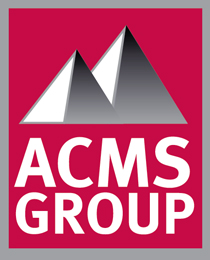The calendar has just flipped to October, and that means you’ll likely be turning on your commercial or industrial property’s heating system soon. The two main ways of heating a property are a furnace or a boiler. This article will focus on the two different types of boilers: high-efficiency (also called condensing) and conventional.
Boiler installation is one of the many services an industrial construction company like ACMS Group can perform, but the installation process varies widely between conventional and high-efficiency boilers. We’ll cover these differences below.
How does a boiler work?
A boiler is a complex piece of machinery used to heat a property. It uses a fuel source like gas or oil to heat water until it becomes steam. That steam is then distributed throughout the property through pipes to radiators or convectors. The radiators or convectors then heat the space in which they are placed. The steam then cools, turns back to water and is then returned to the boiler to repeat the process again.
What’s the difference between a conventional and a high-efficiency boiler?
The heat conduction process that occurs in a boiler produces chemical byproducts in the form of gases. With a conventional boiler, these gaseous byproducts are transported to the flue, which routes the fumes outside your property.
This is a relatively simple and inexpensive process, with the only downside being that the fumes being ejected from your property are still heated from the conduction process. This means that some hot air is being wasted that could be used to heat your commercial or industrial space.
A high-efficiency boiler, on the other hand, contains special parts, components and mechanisms to help recoup some of that hot air that’s being released outside your property. Instead of shooting the hot air byproducts outside, it cycles the air back into the boiler to be used again to heat your workspace.
This process works because of a heat exchanger. The heat exchanger facilitates the transition of the heated steam back to a water vapor, which is then condensed and turned to a liquid. That liquid is then used to heat the space.
How do the installation processes differ when it comes to conventional and high-efficiency boilers?
High-efficiency boilers can save you money on fuel and energy costs. They’re also significantly more complicated to install. They require many more parts and special materials to deal with the added chemical reactions that take place within the boiler. They will on balance cost more than a conventional boiler to put in.
A conventional boiler is much simpler to install than a high-efficiency boiler, and you can find an industrial construction company or HVAC technician to perform the task for you. The only downside is that you’ll be somewhat limited in where you can place the boiler, because there must be a way to route the gases outside via a chimney, flue or pipe. However, any upfront savings might be offset by a conventional boiler’s relative inefficiency when compared to a condensing boiler.
Call about your construction project today
If you require industrial construction services or other construction project management, give us a call at ACMS Group. We have over 25 years of construction industry experience, and our experts can help you tackle projects of any size or scale.
